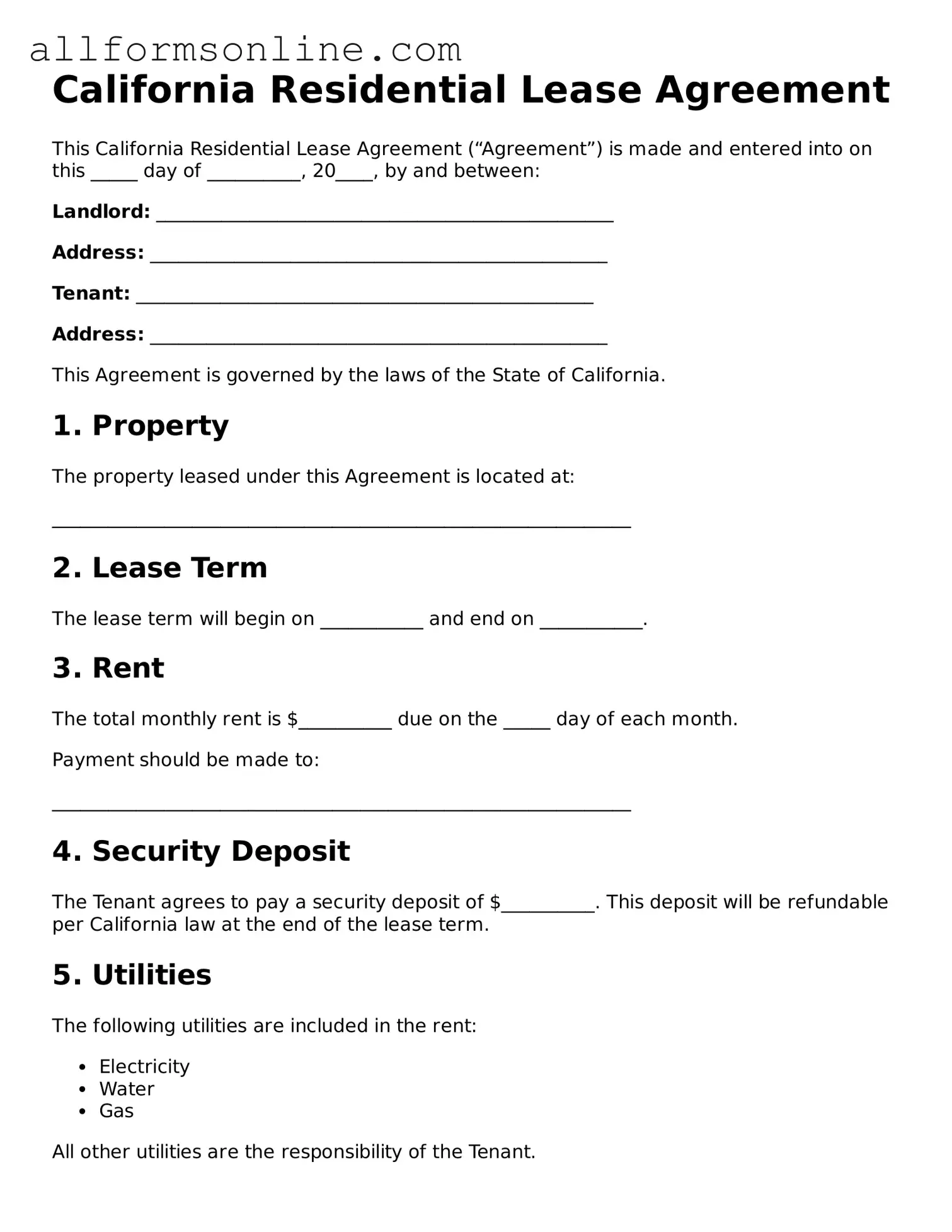What is a California Residential Lease Agreement?
A California Residential Lease Agreement is a legal document that outlines the terms and conditions between a landlord and a tenant for renting residential property. This agreement specifies the duration of the lease, the amount of rent, payment methods, and responsibilities for maintenance and repairs. It serves to protect both parties by clearly defining their rights and obligations during the rental period.
What should be included in a California Residential Lease Agreement?
Essential elements of a California Residential Lease Agreement include the names of the landlord and tenant, the rental property address, the lease term (fixed or month-to-month), the rental amount, and payment details. Additionally, it should outline security deposit terms, maintenance responsibilities, and rules regarding pets and guests. Including clauses about termination and renewal options is also advisable to avoid misunderstandings.
How long is a typical lease term in California?
Lease terms in California can vary widely. A standard lease is often for one year, but it can also be month-to-month or for a shorter duration. The choice depends on the needs of the landlord and tenant. Short-term leases may provide flexibility, while longer leases can offer stability for both parties.
Can a landlord increase the rent during the lease term?
Generally, a landlord cannot increase rent during the lease term unless the lease agreement includes a specific provision allowing for such increases. For month-to-month leases, landlords can raise rent with proper notice, typically 30 days. It’s important for tenants to review their lease carefully to understand any stipulations regarding rent increases.
What happens if a tenant breaks the lease?
If a tenant breaks the lease, they may face penalties as outlined in the lease agreement. This could include losing their security deposit or being responsible for rent until a new tenant is found. However, tenants may have valid reasons for breaking a lease, such as domestic violence or uninhabitable living conditions. Legal advice may be necessary to navigate these situations effectively.
